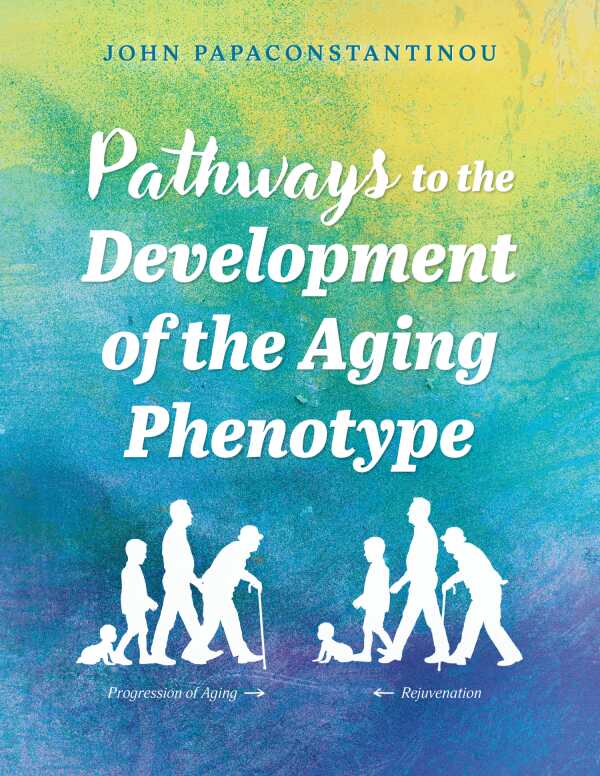Pathways to the Development of the Aging Phenotype
Pathways to the Development of the Aging Phenotype is an expert study of new technologies and theories in the field of gerontology.
John Papaconstantinou’s monograph on modern science’s understanding of aging, Pathways to the Development of the Aging Phenotype, presents a totalizing view of how and why aging manifests in the human body and the possible interventions that can prevent it.
Asserting that, over centuries, the medical treatment of aging has moved from exclusive emphasis on caring for the aged to acknowledging the possibility of curing the symptoms of aging itself, the book considers new understandings of how aging plays out on a molecular and cellular level. It declares that modern medicine has been able to uncover three root causes of age-related diseases and treat them: sustained levels of inflammation; chronic tissue oxidative stress; and autophagy impairment, or the breakdown of natural process for clearing cellular debris. These causes are itemized, defined in biological terms, and linked to the most severe diseases prevalent in aging populations.
Covering topics from Parkinson’s to diabetes, various forms of cancer, and cardiovascular issues in terms of the three cellular markers it names, the book redefines aging as a condition with various comorbidities that can all be attributed to three basic causes. It then argues that focusing on the process of aging itself, rather than the individual symptoms and diseases it provokes, may allow for the possibility of addressing numerous age-related diseases with a single treatment.
In bringing together the most up-to-date theories and experimental treatments for aging, many of which are still in clinical trials, the book proves to be an invaluable resource, covering the contemporary fields of gerontology and geriatrics in clear terms. Its chapters are dedicated to the aging of various organs, including the liver, the pancreas, and the brain, as well as to procedures like plasma transfusions and a cutting-edge chemotherapy-adjacent treatment called senolysis that may be able to remove decrepit cells and stimulate the creation of new, rejuvenated ones, or juvenile phenotypes. The specific framing of each chapter around a particular area of aging, along with textbook-style subsections, the bolding of operative words and phrases, and the inclusion of diagrams to depict cellular details, makes this a useful didactic tool.
Indeed, the book is rich in information, research, and academic depth. Its chapters are often accompanied by hundreds of references to outside scholarship. The chapters also begin with lengthy abstracts and end with concise summaries. However, the abstracts, summaries, and bodies of chapters prioritize technical vocabulary and the minutiae of how a biological process or medical innovation functions at the level of cellular anatomy and chemical composition, and some of their explanations are long-winded. Repetitive descriptions, obscure scientific language, and analyses that sacrifice broad understandings of processes for mechanical specifics also stand to hold general audiences at a distance. The consistency of the book’s complex, granular tone across different sections ends up undermining its efficacy and accessibility. Still, this is an expert study of new technologies and theories in the field of gerontology.
Pathways to the Development of the Aging Phenotype is a thorough academic treatise on the possibility of mitigating and reversing the adverse effects of old age.
Reviewed by
Willem Marx
Disclosure: This article is not an endorsement, but a review. The publisher of this book provided free copies of the book and paid a small fee to have their book reviewed by a professional reviewer. Foreword Reviews and Clarion Reviews make no guarantee that the publisher will receive a positive review. Foreword Magazine, Inc. is disclosing this in accordance with the Federal Trade Commission’s 16 CFR, Part 255.

